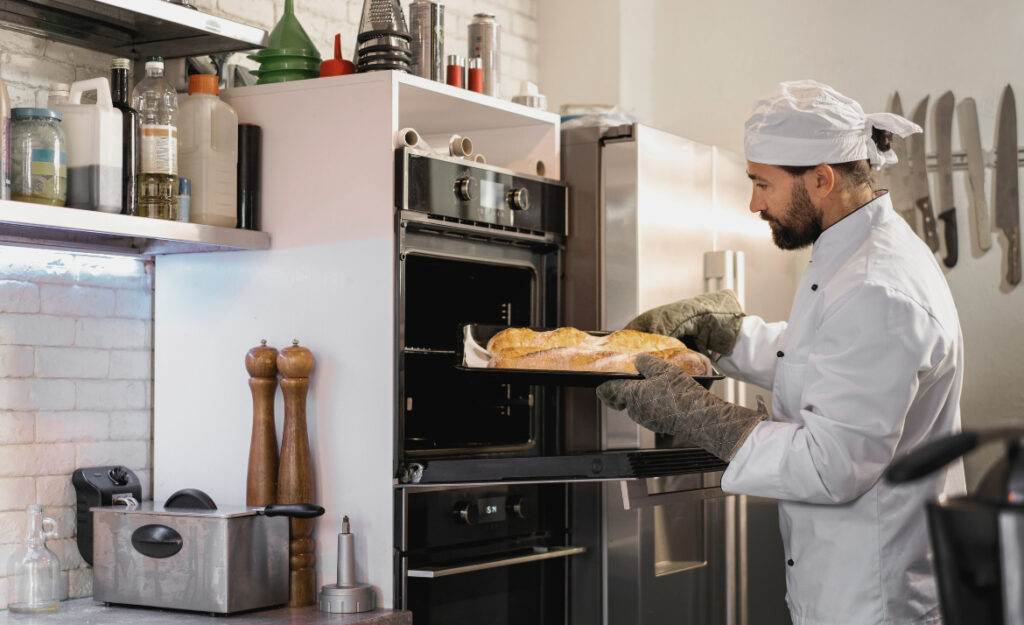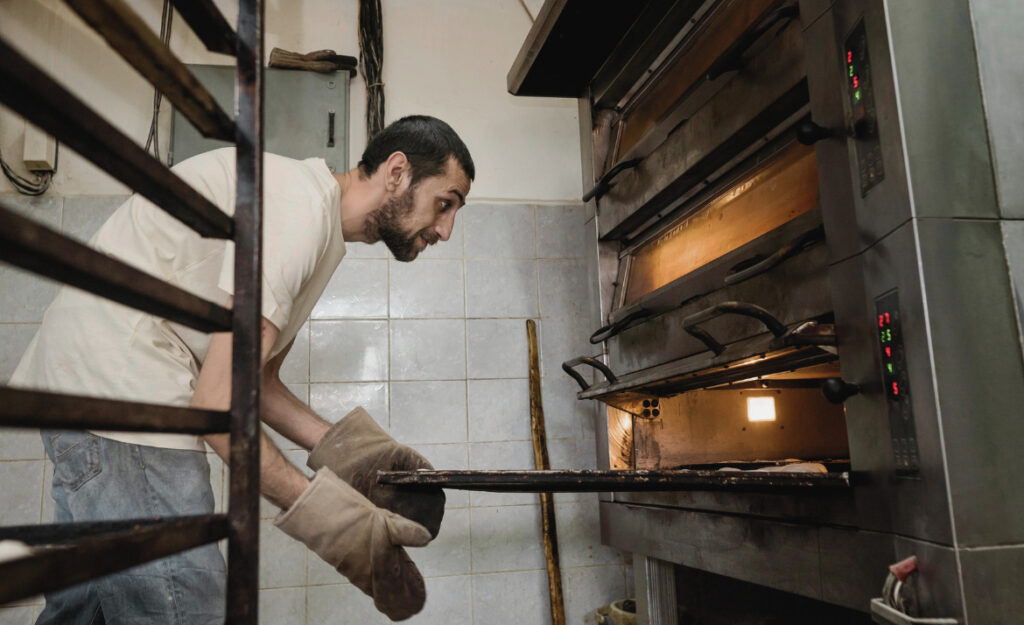
Bustling kitchens rely on every second and every system humming along. If you’ve ever watched staff scramble around a sluggish oven, you know why pros seek oven ventilation tips that deliver results—not just theories.
In industrial kitchens, poor ventilation doesn’t just slow recipes. It invites safety issues, flavor inconsistencies, and energy waste. These details shape a chef’s day and can even impact the bottom line, service after service.
Ready to experience a smoother, cooler workspace where everything cooks evenly and staff work comfortably? You’re in the right place. Dive in for actionable guidance on making oven performance move as fast as your team.
Consistent Airflow Changes Everything in Commercial Cooking
Solid airflow means ovens heat up faster, cool down reliably, and produce ovens that yield identical results batch after batch. Every chef knows the difference the right vent can make.
In high-output kitchens, warm air pockets or stale convection sap energy and destroy product consistency. When teams learn specific oven ventilation tips, surprises vanish and oven performance climbs.
Identifying Airflow Weak-Spots During Peak Service
Line cooks might grumble about hot spots or streaky baking trays. Instead, try this: walk the line with a thin strip of paper and hold it in various oven spots. If it droops or dances unpredictably, airflow is uneven.
This hands-on check reveals far more about your venting than any inspection chart. The best oven ventilation tips start with real-time, observable kitchen tests, not guesswork or outdated numbers from a spec sheet.
When airflow lags only on one side, adjust racks or even try recirculating fans to direct air more forcefully. Most kitchens find this shrinks baking time for finicky dishes.
Addressing Duct Layouts Before Expanding Oven Units
Ovens lined up on a single wall or squeezed beneath a crowded hood may cause competing airflow patterns. Before adding a new unit, draw a map of existing ducts and vents.
Have a maintenance tech confirm the ducting diameter is matched to total oven output. When unsure, use kitchen-safe smoke pens: the flow should siphon smoothly upward, no swirling or lingering.
Comparing these patterns to recommended oven ventilation tips gives your kitchen a plan for upgrades. You’ll stop heat-backwash and prep for future equipment as well.
| Ventilation System | Best For | Energy Efficiency | Action Step |
|---|---|---|---|
| Single Hood, Direct Duct | Small oven banks | Moderate | Install one large vent for clustered ovens |
| Multiple Ducted Hoods | Mixed equipment | High | Segment zones by oven type |
| Variable Speed Fans | Variable load kitchens | Very High | Add automatic fan controls |
| Make-Up Air System | High-output spaces | Very High | Balance with supply air from outside |
| Smart Sensor Controls | Dynamic kitchens | Top Tier | Integrate sensors for adaptive exhaust |
Spotting Problems and Fixes Without Disrupting Service Flow
Efficient oven ventilation minimizes downtime and keeps teams focused on food, not fighting equipment. Reacting this way brings daily relief—no drawn-out shutdowns required.
Start by listening: Check for whining fans or rattling duct joints during pre-service. Changes in sound signal trouble before temps wander off-mark or cooks start sweating their tickets.
When Filters Clog and Cost You Performance
Filters packed with grease force fans to overwork. This tax creeps up: cooks see longer bake times and uneven toasting. Pop out filters for a visual once a week, cleaning or swapping based on buildup.
- Schedule filter inspection after peak nights, not just before busy weekends. Filters clog fastest when the kitchen is most active.
- Switch to high-capacity metal mesh filters if your kitchen puts out dense vapors. These wash easily and trap more particulate.
- Record with a whiteboard sticker by each oven to log the date—consistency cements the habit.
- Teach every opener and closer how to spot a borderline filter before airflow drops.
- Stock backups so filters can be changed in under a minute—zero excuses for cutting corners.
Kitchen leads notice less staff fatigue, and food runners return with fewer remakes after simple filter routines are in play.
Sealing Leaks Before Heat Spills into the Kitchen
Joints in ductwork and gaps around vent connections leak air and let smoke escape back into prep zones. Hold a lit incense stick near seams during service lull; wafting smoke signals a loose seal.
- Keep aluminum HVAC tape in your tool caddy and wrap immediately, not later—minor leaks amplify all day.
- Train cooks to spot condensation beads on vent connections. This means steamy air is escaping somewhere.
- Log leak-prone connections every month and prioritize fixes before busy stretches. Prep for recurring problem spots.
- Request maintenance swap metal screws or clamps for broken clips—quick switches protect staff comfort overnight.
- Update your maintenance manual with photos and quick fix instructions for each oven or hood system.
Plugged leaks mean lower kitchen temps—and nobody hovers near the ovens mopping sweat while lunch rush blazes.
Streamlining Oven Maintenance to Prevent Emergency Repairs
Regular, bite-sized tasks stave off breakdowns, saving money and keeping staff from scrambling due to surprise failures. Written routines anchored in oven ventilation tips do the real work here.
Small fixes, done often, sidestep heat surges that burn food, trip breakers, or over-bake your bestsellers. Here’s what happens when habits stick and what to watch if new hires struggle.
Step-by-Step Daily Walkthrough Script for Staff
“Every morning, open each oven, check for breadcrumbs under the racks, and tap filter covers for looseness. Each shift, clear lint or scraps from vents by hand before starting another batch.”
Managers post simple checklists right on the prep fridge. If cooks skip a step and the oven ‘breathes’ funny, corrections are immediate and clear. This consistent approach keeps issues visible.
On overnight shutdown, assign a final walk: staff runs a hand under all vents for grease. Sticky fingers mean scrubbing tonight, not tomorrow after problems snowball.
Adapting Daily Checks for High-Volume Bake Cycles
Bakeries running consecutive shifts rotate staff for quick vent sweeps at shift change. As one baker says: “Halfway through the bagel batch, we pause to clear crumbs and inspect the duct for steam build-up.”
When pressure rises, staff check vent air speed by holding a strip of parchment at the exhaust—directed, fluttering flow is green; meandering or barely moving is red. Simple visual cues supplement routine logs.
If anything’s off, a sticky note flags the oven for deeper cleaning between rushes. This quick signal curbs frustration and prevents upset buyers waiting for undercooked loaves.
Choosing Ventilation Options with Kitchen Layout in Mind
Comparing oven ventilation tips for multiple layouts ensures upgrades match real-world challenges—no more one-size-fits-all thinking or wasted investments. Check examples below to sharpen your next planning session.
U-shaped lines with double-stack ovens need extra vent runs compared to galley-style setups. Noticing bottlenecks lets you act before heat doubles back at busy corners.
Optimizing for Open Kitchens Where Guests See Cooking Action
Visible ductwork must blend form and function. Install sleek, stainless low-profile hoods that draw efficiently and wipe down fast. This keeps pans sizzling without fogging up the dining room glass.
For staff, orient vents to flow away from sightlines—watching vapor swirl behind the chef can distract guests. Post-shift, assign a quick towel swipe to shine visible ducts before closing down for the night.
When a vent fails mid-service and guests notice a haze, assign a runner to clean and reset it with minimal fuss, copying: “Please let us fix that now for your comfort.”
Upgrading Ventilation for Expansion or Equipment Swap
Before placing new ovens, simulate airflow with cardboard templates and ping-pong balls to trace likely vent patterns. This hands-on test lets you rearrange on paper, minimizing on-site headaches.
Coordinate with your HVAC specialist to specify correct duct diameter for every extra unit. Small mistakes amplify later, requiring patchwork extensions that steal from your usable prep space.
If needed, reroute kitchen make-up air returns to keep the entire line in balance. Test with anemometers after installation to document air speeds and tweak velocities before relaunching service.
Practical Routines for Training Staff on Ventilation Habits
Training every employee on key oven ventilation tips builds consistency—even when turnover hits. Direct, hands-on process demos yield better adherence than text-heavy manuals or quarterly memos.
After the first month, review staff adherence by tracking oven temp logs and maintenance check sign-offs. This data pinpoints coaching, rewarding teams or individuals who best embody system care.
Live Demo Sessions for New Hires
Gather kitchen staff for a 15-minute evening demo. Use colored water spray bottles to show how mist patterns change with fans running. This turns airflow theory into concrete action.
Rotate tasks—one person checks vents, another wipes ducts, a third inspects filters. Practicing each step builds muscle memory and reduces embarrassment about mistakes later.
After demos, assign staff to pairs for the next week to reinforce habits and allow gentle reminders if anyone misses a step.
What Supervisors Say and Watch For During Shadow Shifts
“I watch how efficiently each cook completes vent maintenance before service and whether they catch airflow quirks on the line,” says one kitchen manager. “Short scripts keep this routine.”
Assess attention: Is someone pausing near the vent with a puzzled look? That’s a cue to remind or reteach. Staff often mirror what they see; lead by example at every turn.
Pair new staff with experienced cooks during dinner rush. Cross-check if steps are missed, then offer private praise or targeted retraining by tomorrow’s start.
Documented Benefits from Pro-Level Ventilation Habits
Meticulous oven ventilation pays off: improved staff morale, better product quality, and measurable savings on utility bills. Regular best practice adoption leads to quantifiable improvements by mid-season.
Kitchen managers notice fewer staff complaints around workstation heat and less absenteeism due to smoky or muggy environments. Food passes look more uniform, with more bakes hitting their ideal golden finish.
Summary Chart: Common Results After Ventilation Overhaul
| Metric | Before Improvement | After Improvement | Takeaway Step |
|---|---|---|---|
| Average Oven Preheat (min) | 12 | 7 | Log daily preheat times |
| Staff Turnover (seasonal) | 27% | 15% | Run quarterly staff surveys |
| Utility Cost Reduction | 0% | 10-15% | Compare monthly bills |
| Product Consistency | Variable | Stable | Share photos among staff |
| Service Interruptions | 4/month | 1/month | Record downtime events |
If leadership is skeptical, share these changes and invite cooks to explain in their words: “This new habit means I serve on time and head home proud every night.” Consistent documentation cements support.
Conclusion: Lasting Improvements in Industrial Kitchen Comfort and Results
Applying targeted oven ventilation tips creates a ripple effect—oven performance improves, staff operate comfortably, and every tray comes out even and on cue.
Paying close attention to airflow, training routines, and equipment layout removes surprise setbacks. Teams learn to catch small issues early and communicate fixes across shifts, fostering a culture of high function.
Teams that embrace these proven habits discover less stress and more pride in the busiest kitchens. Start today and let your oven’s smooth operation set the entire workflow up for ongoing excellence.
Frequently Asked Questions
What is the first sign of poor oven ventilation in an industrial kitchen?
The earliest indicator is uneven cooking results—trays brown patchily or take longer to finish. Staff may also notice uncomfortable hot zones and a spike in humidity near ovens. Addressing these early wards off longer-term damage or lost energy efficiency.
How often should I schedule vent cleaning in a heavy-use kitchen?
Schedule at least weekly filter inspections and monthly deep cleans for ductwork, depending on production volume. High-volume sites typically swap or wash filters after every busy day. For full systems, expect a professional check at least every quarter for peak results.
What tools help identify airflow problems without special equipment?
A thin paper strip, lightweight incense, or a small kitchen-safe smoke pen reveals airflow patterns and duct leaks quickly. Simply hold these near vents or oven exhaust to watch for uneven movement or backdrafts, then adjust as needed based on real-time feedback.
Can upgrading just one part of a ventilation system help performance?
Improving a single filter or duct joint may yield some gains, but balancing all parts—hood, duct, fan, and exhaust—delivers the biggest improvement. It’s best to document baseline performance, implement, then retest widely to ensure reliability after upgrades are made.
Why involve the whole kitchen staff in ventilation routines?
Involving all staff ensures shared habits, catches early problems, and turns maintenance into part of the working rhythm. It builds ownership and keeps everyone safer and more comfortable, while maintaining consistent oven performance throughout changing shifts or new hires.



